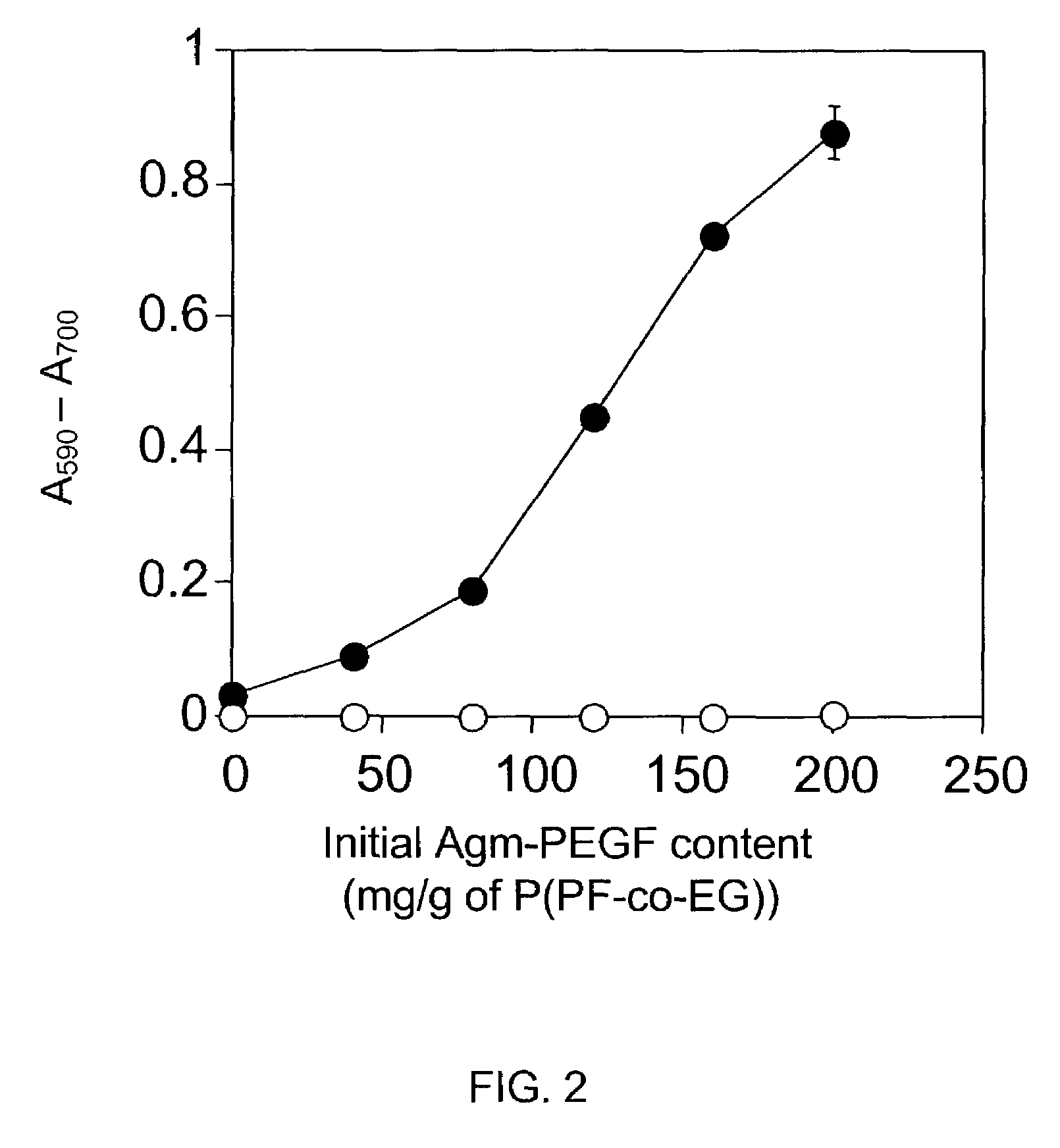Synthesis and characterization of biodegradable cationic poly(propylene fumarate-co-ethylene glycol) copolymer hydrogels modified with agmatine for enhanced cell adhesion
a hydrogel and agmatine technology, applied in the field of hydrogel formation, can solve the problems of inability to degrade cationic hydrogels of previous investigations, limited toxicity of hydrogel modifiers such as cationic monomers, and inability to meet the requirements of certain applications, and achieve the effects of improving cell adhesion to p(pf-co-eg) hydrogels, moderate weight swelling ratio of present hydrogels, and improving cell adhesion
- Summary
- Abstract
- Description
- Claims
- Application Information
AI Technical Summary
Benefits of technology
Problems solved by technology
Method used
Image
Examples
Embodiment Construction
[0021]The present invention includes a composition and a method for forming a hydrogel having desirable properties of in situ polymerizability, biodegradability, and hydrophilicity, and cell adhesion.
[0022]According to one embodiment of the present invention, a cross-linkable monomer is provided which includes a fumaric acid functional group having a first end and a second end, first and second spacer groups affixed to the first and second ends, respectively, a first terminal group affixed to the first spacer group, and a second terminal group affixed to said second spacer group.
[0023]The first and second spacer groups each preferably comprise at least one ethylene glycol unit and preferably several ethylene glycol units. The spacer length is determined by the number of repeating units present in the spacer group and is preferably selected in such as way as to i) facilitate the interaction of the terminal group with cell receptors for enhancing adhesion and modulating cell function ...
PUM
| Property | Measurement | Unit |
|---|---|---|
| pH | aaaaa | aaaaa |
| pH | aaaaa | aaaaa |
| pKa | aaaaa | aaaaa |
Abstract
Description
Claims
Application Information
 Login to View More
Login to View More - R&D
- Intellectual Property
- Life Sciences
- Materials
- Tech Scout
- Unparalleled Data Quality
- Higher Quality Content
- 60% Fewer Hallucinations
Browse by: Latest US Patents, China's latest patents, Technical Efficacy Thesaurus, Application Domain, Technology Topic, Popular Technical Reports.
© 2025 PatSnap. All rights reserved.Legal|Privacy policy|Modern Slavery Act Transparency Statement|Sitemap|About US| Contact US: help@patsnap.com



